Bingo! My quest in search of Yorick Gradeley proved rewarding. Fruitful indeed: it hit three cherries and paid out with not one, but TWO articles that he composed based on the adventures of Mark All and starring the man himself in the leading role. These were published in a journal called ‘The Wide World Magazine’ and appeared in the January and February editions of 1908. I am pasting copies of the pages below so you can read them for yourselves. I’ll do so in two episodes …
I didn’t discover much otherwise about Yorick Gradeley himself. Well, I say, not much. He pops up here and there, but randomly. He wrote a number of pieces under the title of ‘Battle To the Strong’ extolling the virtues of manly vigour. Come to that, he was, it seems, an early and enthusiastic contributor to ‘Health and Efficiency’ magazine . (Interesting, but don’t get side-tracked). Whilst not that way engaged, he was equally a busy as a proponent of open air theatre in Epping Forest. “Dear Sir”, he wrote to The London Daily News in February 1906, “I make bold now to create the band or bands of Woodland Players whose function it shall be throughout the Spring and Summer to tour the sylvan glades performing pastoral and fairy plays not for lucre, but for love”. Make of this what you will, he also took Mark All (at least, as we have seen, his notebooks and diary) under his wing …
Meanwhile.
My investigation of Mark All and his marathon tramp has led me to appreciate a number of things. Not least, I now recognize how easily an obsession sets in, especially when a task is undertaken by someone with purpose and determination. Mark All was not a vagrant; he was an out of work engineer bent on proving a point that he was not ready for the industrial scrapheap because of his age. I have come to see him as a proud, skilled man, skilled not least in a talent for self-preservation. I also have come to know his character a little better, and even admit a little (naïve) disappointment that he was not more benevolent in his outlook towards his fellow travellers. I come to terms with this by putting him into the context of his times. Allow me if you will to conjure up the metaphorical landscape through which Mark All moved.
He was, after all, a man of his times. These were the years preceding the First World War. They were (unfortunately) characterised by a distinct anti-German sentiment. ‘Germanophobia’ along with its bastard-twin, anti-Semitism, was everywhere apparent. Just scratch the surface. It had roots in the nineteenth century but was accelerated by the Entente Cordiale between England and France in 1904, (in a nutshell, essentially a diplomatic agreement that settled who owned what in North Africa) after which a perceived fear of German militarism replaced the erstwhile admiration of German culture and literature. The relationship between King Edward and his nephew the Kaiser Wilhelm, never great, was, to say the least, dysfunctional. Erskine Childers’ ‘Riddle of the Sands’ was published in 1903 conveying the threat of German invasion!
And surprise, surprise, in the midst of all this, Alfred Harmsworth pops up again, albeit behind the scenes, manipulating the strings. In 1894, he had commissioned the author William Le Queux (look-him-up) to write a novel called ‘The Great War in England in 1897’ in which France and Russia had combined to crush Britain, until, with German aide this dastardly attempt was averted. Come 1906, Harmsworth had the same author change the title and the plot. This time it became, ‘The Invasion of 1910’ and the enemy was Germany. Serialized in The Daily Mail it was immensely successful, as well it might be with a newspaper magnate advertising it. Harmsworth, it is said, even hired actors dressed up as German soldiers, employed to ‘menace’ the shoppers in Oxford Street. In due course it was translated into 27 languages and eventually sold over a million copies. Only in Germany was it poorly received. It, and similar publications, soon stirred up an atmosphere of paranoia and xenophobia in society.
In popular culture the genie that Harmsworth, et al., let out of the bottle led to the creation of a caricature type of Englishman, a chap generally known as ‘one of the Bulldog-Breed’. Typically they were sterling sorts (usually drawn from the upper echelons, but often as not they kept a sidekick in tow who spoke the vulgar tongue). They had in common a fierce patriotism, a loyalty and were likewise physically and morally intrepid. Together, they were sworn in defence of their country against the threat of Johnny Foreigner. This, I think, is what Yorick Gradeley saw – or thought he saw – in Mark All. A sort of noble savagery. Alternatively, it was something he perhaps wished to project on to him. You, the jury, must decide.
So, now, with profuse and heartfelt apologies to my German friends in particular (and any others whom I might unwittingly offend), here is the first episode of Yorick Gradeley’s, ripping yarn: ‘A Sixty Thousand-Mile Walk’, as it appeared in ‘The Wide World Magazine’ in January 1908. The illustrations are by George Soper. It is, as it says, ‘To be concluded’. I will publish Part 2 soon as possible. Till then, keep well, and let me know your thoughts …
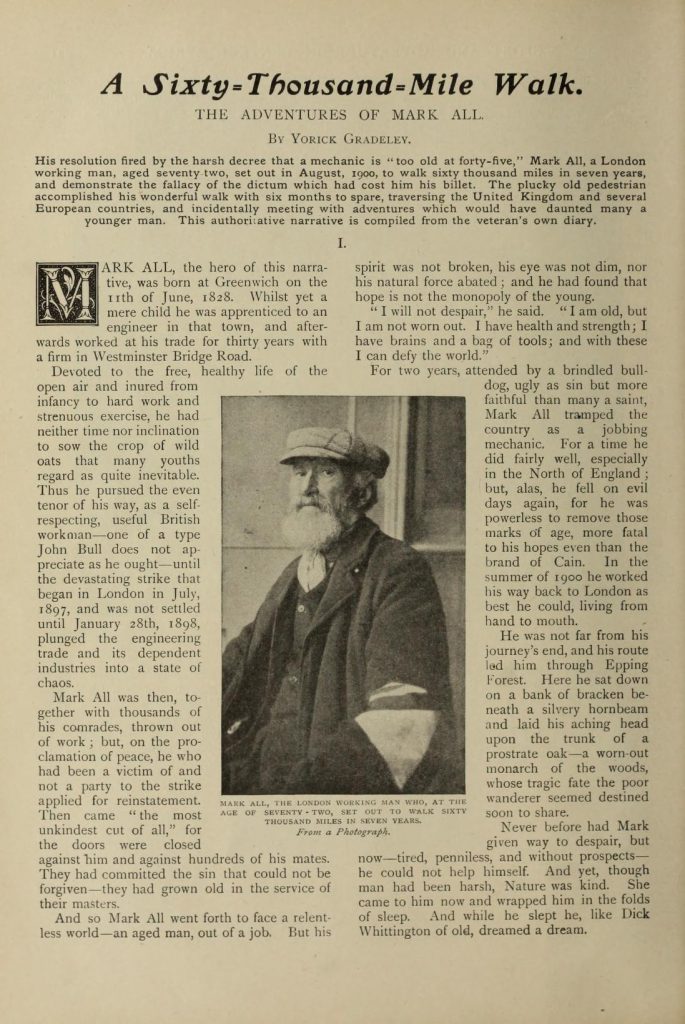
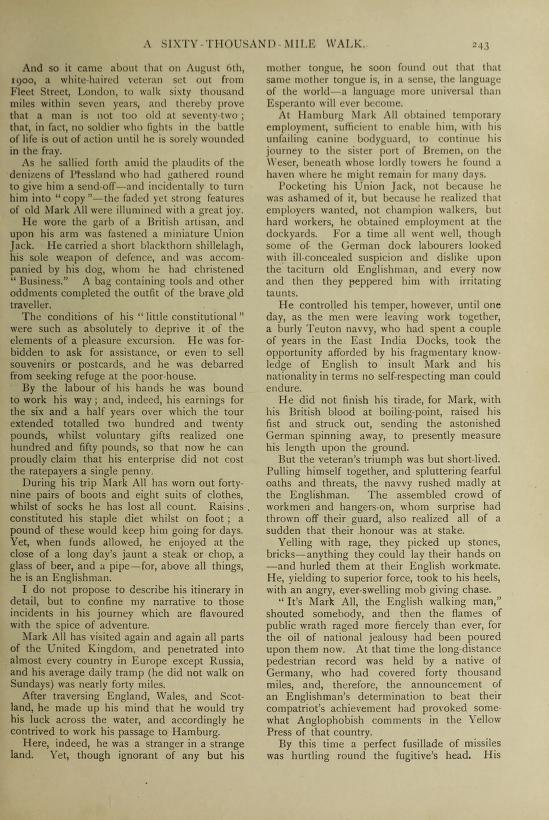
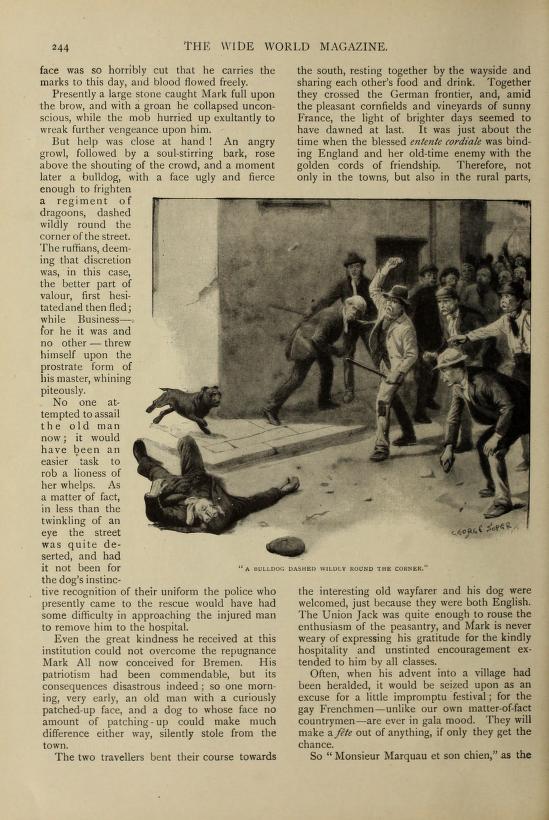
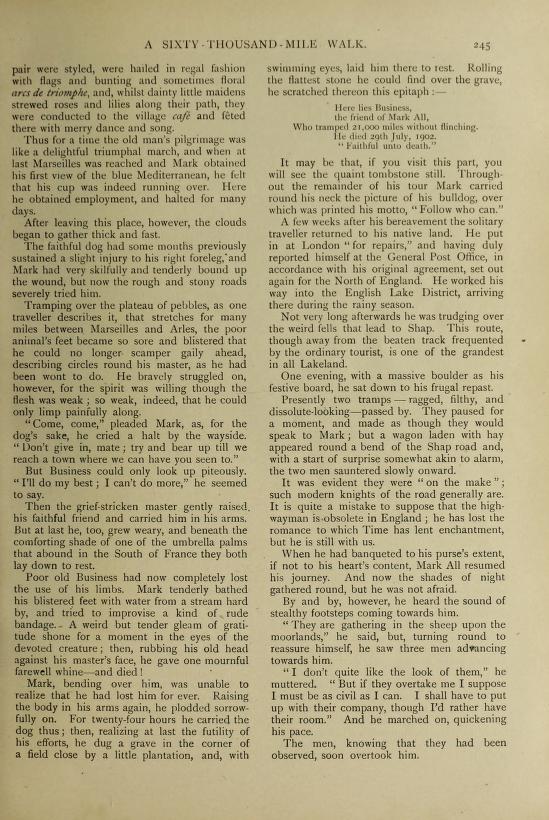
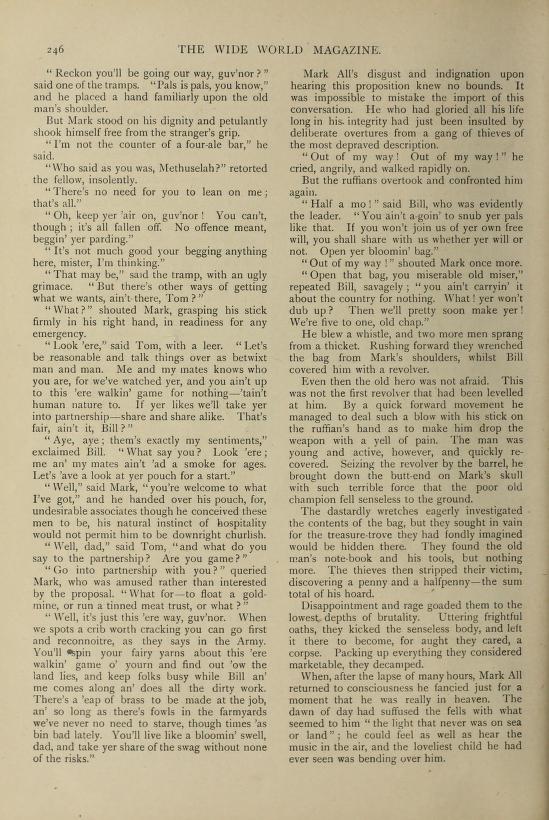
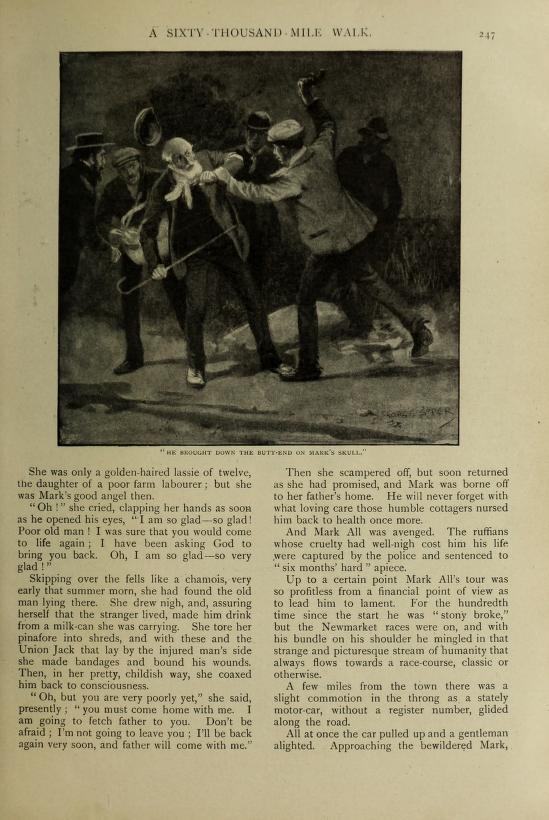
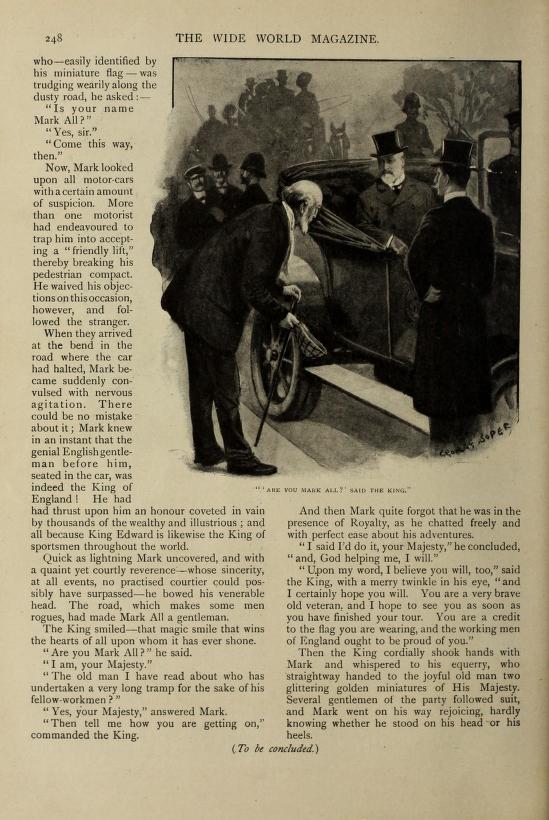
Leave a Reply